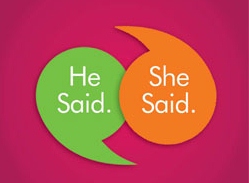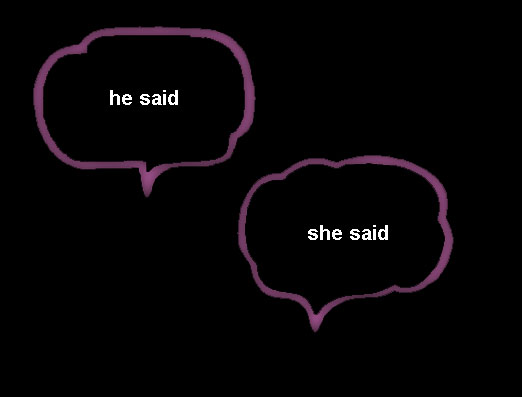A blog reader left an excellent comment on a post:
Tamela, fiction workshop presenters taught me that the best word for “said” is “said”–that others only tend to slow down the reader’s eye. I’d appreciate a discussion on this.
While I don’t know the workshop presenters in question, what I can guess they meant is to avoid substituting creative verbs for “said” as a tag. For example:
“Cyrus, tell that joke about the tortoise and the hare,” the cowboy chuckled.
“This caviar is not up to my standards,” the dowager sniffed.
These tags aren’t without merit because they do help convey the emotions and actions of the characters. In fact, they could even be expanded into effective action tags. At the least, simple punctuation would keep these characters from performing the improbable task of sniffing and chuckling words:
“Cyrus, tell that joke about the tortoise and the hare.” The cowboy chuckled.
“This caviar is not up to my standards.” The dowager sniffed.
So why would fiction workshop presenters tell writers to use the word “said” as a tag? I would say that there is a time and place to use a simple tag. In a fast-paced scene, a simple tag will keep the action flowing. For example:
“Get the gun,” Bruce said.
“What?”
“I said, get the gun.”
“Why?”
“Don’t ask questions,” Bruce said. “Just do as I say. Now.”
In a case such as this, complicated action tags could slow down the rhythm and urgency of the scene, distracting the reader, rather than adding to the story. The “said” tag is used infrequently to help the reader keep track of the conversation.
Another good reason to use “said” is as a break from descriptive and action tags, adding variety and rhythm to your prose. Also consider that each phrase a character utters can’t realistically be accompanied by an action. Think about it. When you are carrying on a conversation, do you make a movement before or after each thought? Does your conversation partner? Action tags are used as descriptors, to further character development, and to enhance the story. But “said” can be an effective way to keep your story moving.
When in doubt, read your words aloud and listen to the rhythm. Hearing your story will help you learn when “said” is your best friend.
[Image above clipped from the cover of Jay & Laura Laffoon’s book He Said. She Said.]











